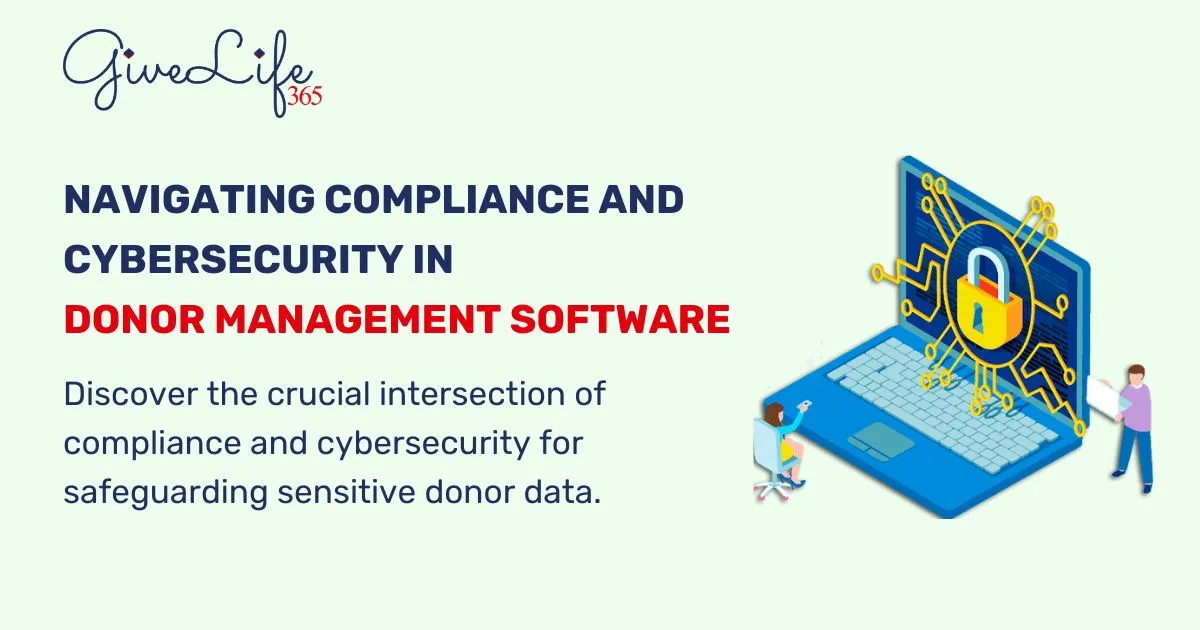

In the digital age, the role of technology in nonprofit organizations has expanded significantly. Donor management software stands as a pivotal tool for efficient operations, enabling streamlined fundraising, donor engagement, and impact tracking. However, with this technological advancement comes the pressing concern of security in managing sensitive donor data.
The Landscape of Donor Management Software
Donor management software has transformed how nonprofits handle their fundraising efforts and donor relationships. With the rise in technological solutions tailored for the sector, Leaders are empowered to optimize fundraising campaigns, segment donor bases, and track contributions effectively. However, the convenience of these platforms brings forth a crucial consideration: security.
The Intersection of Compliance and Security
1. Data Protection Compliance
In the current regulatory scenario, nonprofits have to follow strict data protection rules, such as the GDPR (General Data Protection Regulation) and CCPA (California Consumer Privacy Act). Donor management software serves as a repository for sensitive information, making compliance a crucial aspect of its utilization.
- GDPR Compliance in Donor Management Software: Ensuring data transparency, consent, and the right to erasure within these platforms aligns with GDPR's core principles, safeguarding donor information.
2. Cybersecurity Measures
Nonprofits face a significant risk from cyber attacks. If donor management software is breached, it could expose sensitive donor data, damage trust, and harm the organization's reputation.
- Encryption and Secure Access Controls: Implementing strong encryption and strict access controls make the software more secure against unauthorized entry.
- Regular Security Audits and Updates: Routine audits and quick software updates reduce weaknesses, actively strengthening its defenses.
Risk Mitigation Strategies
1. Employee Training and Awareness
Human error remains one of the leading causes of security breaches. Comprehensive training programs ensure that all staff members are well-versed in security protocols and aware of potential threats.
- Phishing Awareness Programs: Educating employees about phishing scams and social engineering tactics minimizes the risk of accidental data exposure.
2. Multi-factor Authentication (MFA)
Implementing MFA adds an extra layer of security, requiring multiple forms of authentication to access the donor management software, significantly reducing the risk of unauthorized entry.
Statistics on Security in Nonprofit Sector
- A Nonprofit Technology Network (NTEN) report revealed that more than half of nonprofits encountered a cybersecurity breach.
- In 2021, the Ponemon Institute determined that the typical expense of a data breach for nonprofits was $3.86 million.
Choosing Secure Donor Management Software
1. Vendor Security Assessment
When you pick donor management software, the most important thing is to carefully assess the vendor's security measures. Check that the vendor follows the best practices in the industry and abides by the necessary data protection rules.
2. Scalability and Customization
Choose software that meets today's security requirements and can also grow and change to fit new security needs in the future.
Conclusion
Nonprofits are increasingly using technology to work better, but it's crucial to keep donor software secure. It's essential to follow security rules while also meeting regulations to protect donor information, maintain trust, and preserve the organization's reputation. Remember, technology helps, but it's crucial to actively ensure security and follow rules to keep donor data safe in today's connected world.
